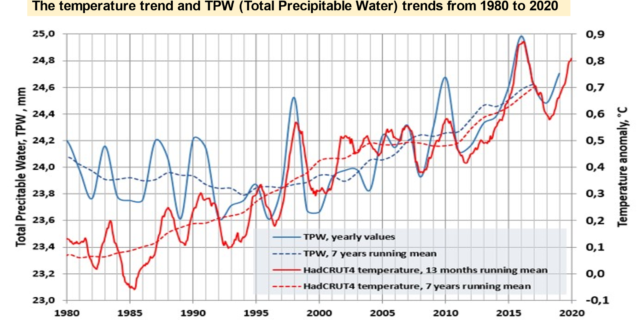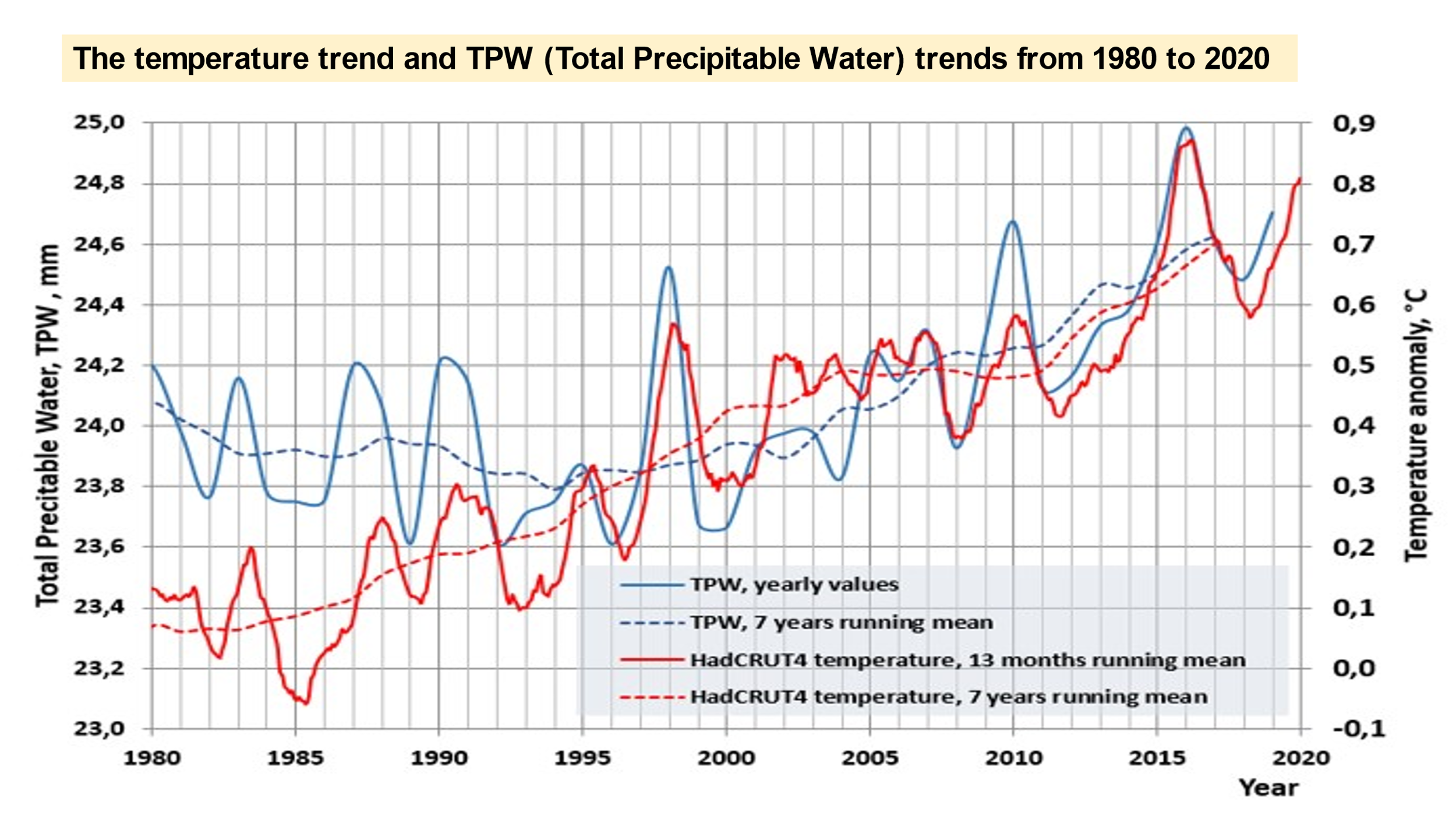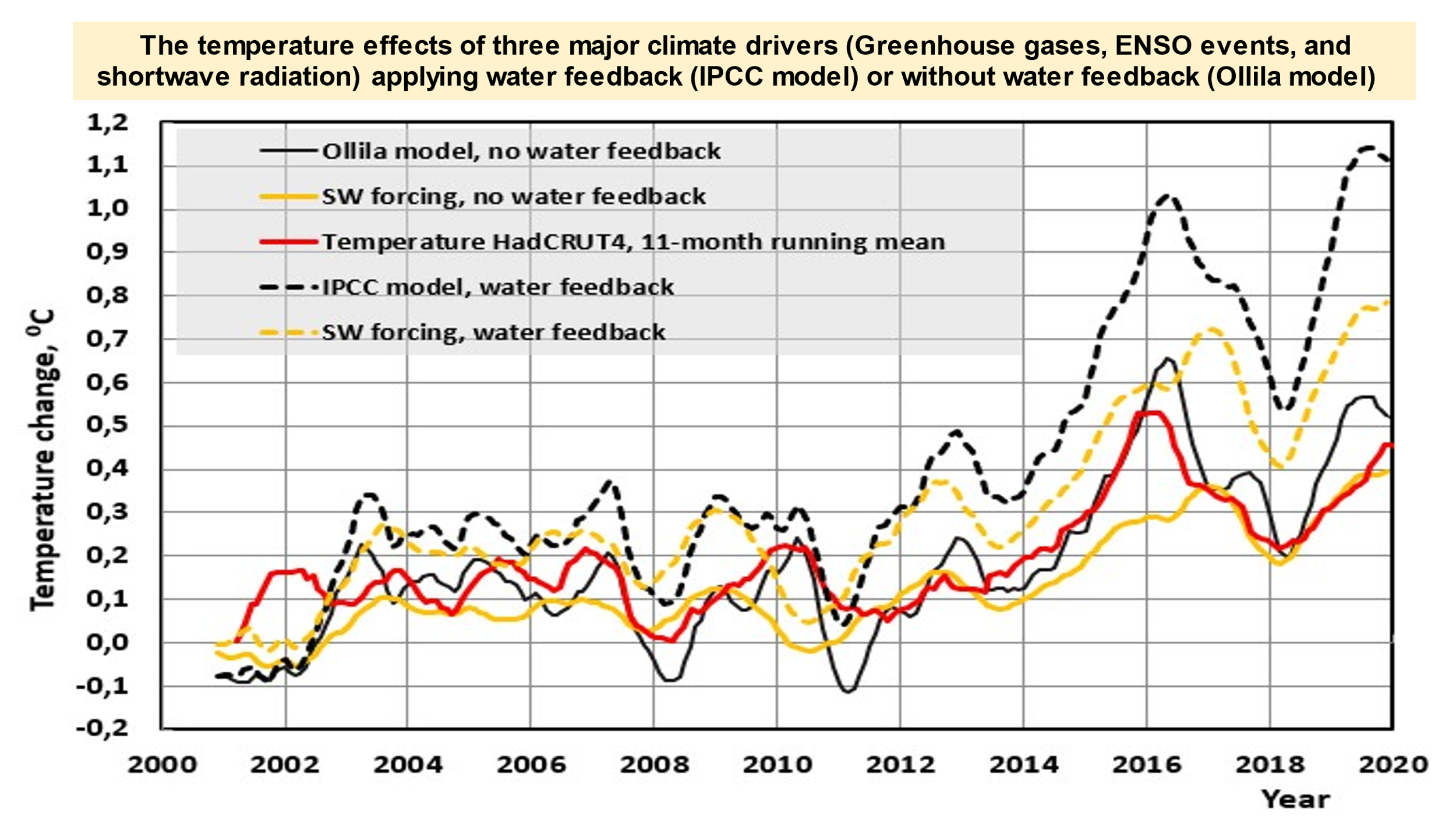
 Dr. Antero Ollila
Dr. Antero Ollila
October 6, 2021
The Nobel Prize Committee has given the following arguments for their choice of rewarding researchers Suykuro, Manabe and Klaus Hasselman: “For the physical modelling of the Earth’s climate , quantifying variability and reliably predicting global warming.” The Committee also presented a brief description of Manabe’s climate model: “Suykuro Manabe was the first researcher to explore the interactions between radiation balance and the vertical transport of air masses due to convection, also taking account of the heat contributed by the water cycle”.
For me it looks like the skeptical and contrarian climate websites have totally ignored these Nobel prize winners. Both researchers are not well-known for the present-day researchers and amateurs. I have tried to find out the scientific research results of Manabe for understanding the prizing reasons. This is my personnel understanding about these matters since the merits given by the Nobel prize committee are too general even for climate researchers. I have analyzed in more details only Manabe’s merits since Hasselmann’s merits seems to me much weaker.
So, what has Manabe been the first to introduce, because the inventor of a new phenomenon is usually rewarded? In 1967, Manabe and Wetherald published an article entitled “Thermal Equilibrium of the Atmosphere with the given distribution of relative humidity”. The name already reveals that scientists used constant relative humidity (RH) profile in the atmosphere. This means in plain language that when the atmospheric temperature rises, it is assumed that RH remains constant. This means that the absolute amount of water vapor in the atmosphere will then increase. This means that since water vapor is about 12 times stronger greenhouse gas than carbon dioxide, the end result is that the atmospheric temperature doubles the initial temperature increase (e.g. the increase in temperature caused by carbon dioxide or shortwave radiation from the Sun).
The term ‘water feedback’ has subsequently been used for this mechanism and, more clearly, ‘positive water feedback’. This is reflected in the value of the climate sensitivity parameter. Namely, the simplest climate model is
dT = λ * RF
where dT is a global temperature change, λ is a climate sensitivity parameter (K/(W/m2) and RF is a radiative forcing (W/m2). The issue of climate sensitivity parameter has been one of the key matters in my research work, and therefore I already have quite a lot of material about this issue.
Ramanathan et al. published in 1985 a research study called “Trace gas trends and their potential role in climate change”. The study summarizes the λ values of different studies. Researchers had found a total of 8 studies until 1985. It should come as no surprise that the earliest study is precisely that study of Manabe and Wetherald, where the value of λ was 0.53 K/(W/m2). According to these 8 studies, the value of λ varied between 0,47 … 0,53 with an average of 0,5 K/(W/m2). It is therefore no surprise that the IPCC has used that value in its Assessment Reports up to 2007 (AR4). Thereafter the IPCC somehow lost its know-how in which way this water feedback works since according to the AR5 water feedback can double or triple the warming effect of greenhouse gases. This does not sound solid science.
In the latest report published in August, AR6 is exceptionally clear about the λ value, what is 0.47 K/(W/m2). The IPCC does not explain the reasons or scientific basis for this rather insignificant value change. The IPCC may be shy since this value is the average reading based on calculations by dozens of selected computer models. In any case, the positive water feedback is still the most essential feature in modern climate models. This feature is very important for the IPCC, and it was firstly introduced by Manabe, and the value of the λ has not changed substantially along the years. I think that this is the main basis for rewarding.
What is the proof about the positive water feedback?
Someone may have noted in that crucial study by Manabe & Wetherald that the researchers used the phrase “Given Distribution of Relative Humidity”, that is, the very old-fashioned expression that the distribution of RH has been given. This, of course, results in the rhetorical question of who has given such a distribution. The expression simply means that scientists assumed that RH would remain constant when the atmospheric temperature changes. I couldn’t find any reflections or justifications in the article as to why RH stays constant rather than that absolute humidity remains constant. The article leaves the impression that the researchers calculated and analyzed the consequences of such a default in the behavior of different climate variables. They do not present a theoretical hypothesis or justification as to why RH would remain constant at all.
In my opinion, it was only 21 years later, when the IPCC was established in 1988 and climate researchers invested in the development of climate models. A theoretical justification for the positive water feedback had to be found. The answer was the equation of Clausius-Clapeyron, which presents a mathematical formula for how the partial pressure of water depends on the temperature of gas phase if it there is 100% relative humidity. There is only such a striking problem with this post-kiln yeast that the average RH in the atmosphere is about 75% globally, and only locally and momentarily 100%. To date, the climate establishment has failed to present a “waterproof” theoretical basis why climate works in such a way that the RH of the atmosphere remains constant.
When nothing else helps, then it is worth considering that direct measurements trends of relative humidity, Fig. 1. I think if someone claims that these trends are straight and constant, then an eyesight test is needed.

Figure 1. Relative humidity trends from 1948 onwards.
Someones will, of course, comment that the old humidity measurements are inaccurate. Figure 2 shows the corresponding curves of RH measurements with the present-day accurate technology. When the temperature increased between 1980 and 2002, the absolute amount of water in the atmosphere decreased, even though the climate establishment’s “RH is constant” assumption is that the exact opposite should have happened.

Figure 2. Trends in absolute humidity and temperature from 1980 onwards.
Third proof whether there is a constant RH in the atmosphere meaning whether the value of λ is 0,47 K/(W/m2) or whether the value of λ is 0,265 K/(W/m2) is a theoretical analysis. The latter value means that there is no positive water feedback in the atmosphere that doubles the warming effect of any RF changes.
For those who are interested in mathematical-physical proof of calculating this value, can find it in this article: https://www.journalpsij.com/index.php/PSIJ/article/view/30127/56520. The analysis is based on the Earth’s energy balance, which shows that the Earth proceeds from one balance state to another without a positive water feedback.
Mother Nature has organized a validation test for the climate sensitivity parameter because the amount of shortwave radiation has increased significantly since 2001, according to CERES satellite measurements. The increase has been 1.61 W/m2 from 2001 to 2019 (comparison year in AR6), Figure 3. That’s a lot of it since the corresponding increase in carbon dioxide RF from 1750 to 2011 was 1.68 W/m2, according to the IPCC.

Figure 3. Trends of total solar irradiation (TSI) change, change in shortwave radiation reflected by the Earth, and change in shortwave radiation absorbed by the Earth.
Finally, temperature trends calculated according to the positive water feedback (the IPCC model) and without positive water feedback (Ollila mode), Figure 4.

Figure 4. Temperature trends according to Ollila and IPCC climate models due to a change in the shortwave radiative forcing changes. The IPCC model has a positive water feedback and Ollila’s model does not.
The result is that the IPCC temperature model shoots well above the measured temperature change. If the IPCC had included this change in the AR6 temperature calculation, the temperature calculated by the models would have been about 2.0 degrees, when the measured temperature was about 1.3 degrees in 2019. Shortwave anomaly has caused 54% of the error according to the positive water feedback, but this variable was omitted. As the results the measured and calculated temperature was the same. Finally, many climate establishment scientists sigh since this is the first time it has happened.
The IPCC had no choice but to go cheating because of this great error and because the Paris agreement limit of 2.0 °C would have been exceeded. And so far, this cheating has been working very well. Now when Manabe has won the Nobel Prize in Physics, peer reviews will conclude that positive water feedback is a real phenomenon because it is rewarded with the Nobel Prize. However, in the original research study of 1967, there is no evidence that it exists, but only the assumption that relative humidity is constant.
It is interesting to find out that among other things that the climate sensitivity ECS was 2,3 °C according to the paper of Manabe and Wetherald, while the corresponding value of the AR6 is from 2,5 ° C to 4,0 °C. Not too much progress in 55 years?


